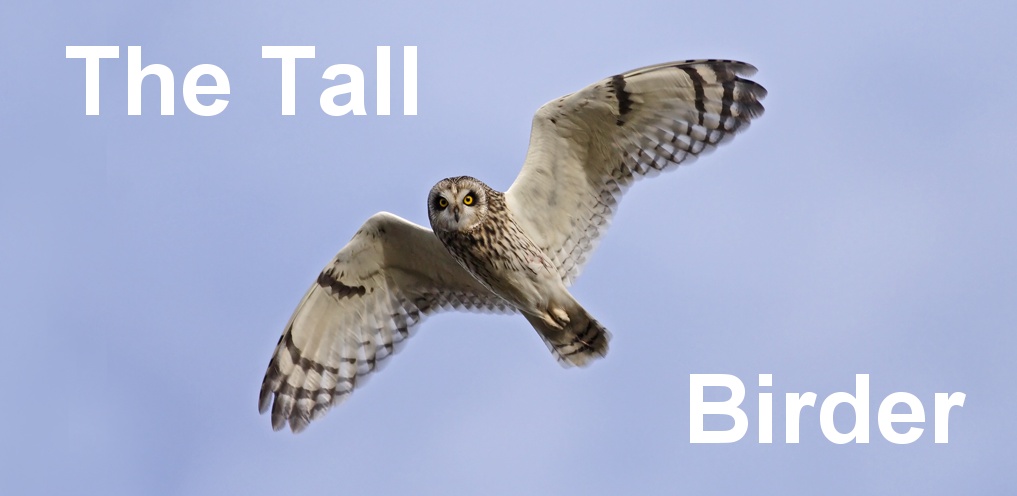A cold and damp day - what a contrast to only a week ago! With conditions like this, Farmoor seemed to be the place to go. I arrived just after the 08:00 opening time, as I prefer to do, and found a nice empty car park. As expected, the first view over FII produced large numbers of low flying hirundines - all 3 species, and my first Swifts of the year as well.
The grassy bank on the eastern side of FI had a Yellow Wagtail briefly, but it departed before I could get my camera on to it. Walking over the causeway there were up to about 9 very skittish Common Sands on the FII side, and a single summer plumaged Dunlin & LRP on the FI side. But they also departed before I could get a photo. At the end of the causeway, there were two more on Yellow Wags on FI but they too left in a hurry without a shot being taken. Frustrating!
Still there was a disconsolate row of Swallows along the edge of the wall, which allowed a closer approach, so I concentrated on the nearest bird.
Damp Swallow. Click here for a larger image
Thereafter I headed for the Pinkhill Hide to try my luck there. There was at least one Cuckoo about which made its presence known from time to time but only showed once or twice without coming close enough to have its photo taken. There was also a surprising group of 2 male Red-crested Pochards, 1 female and a male Tufted Duck joining in. They were restless, departing and re-appearing a few times, and once flew towards me and over the hide which provided this shot.
Red-crested Pochard fly-over
After spending some time here, without much else happening, I decided it was time to go, whereupon just as I was packing up a Kingfisher appeared and settled on a distant perch briefly. I just managed to get onto it before it departed. Always a bird to brighten up even the dullest day (which this was)!
Distant Kingfisher
I then headed back over the causeway meeting a number of arriving birders as I went. It later turned out that two Great Skuas were seen on Farmoor that day, and I have a nasty feeling I could have walked straight past them without noticing! But if I did, none of the arriving birders had seen them by then, either. Note to self - look more beyond the causeway in future, especially on the return leg!
In blissful ignorance of the skuas, I headed to Lark Hill where the expected Wheatears were again in residence on the underground reservoir. This week I counted up to at least four, so I spent some time trying to get some photos of them. At one point, a nice male approached the boundary chain link fence quite closely and I managed to get this shot through the fence, without too many ill effects on image quality (after a bit of Photo-shopping that is).
Male Wheatear in the rain!
Even better at one point a female flew up onto the fence post closest to me and even stayed there while I got the camera onto to it. At this distance it completely filled the frame, and the close up is probably more effective than the whole bird.
Wheatear on fence post at Lark Hill
Crop of above













